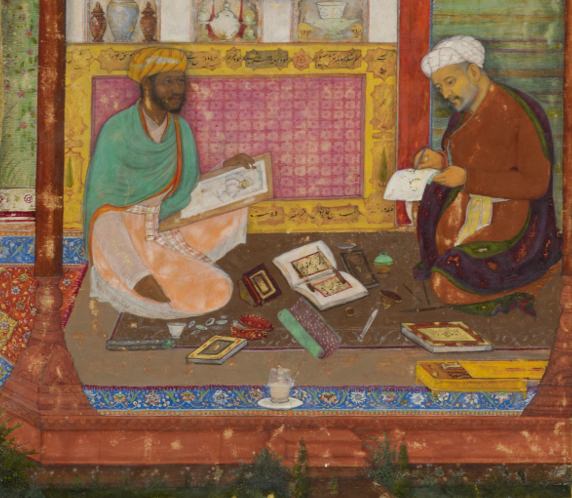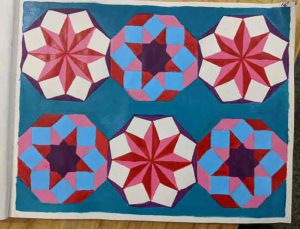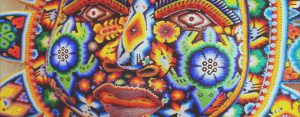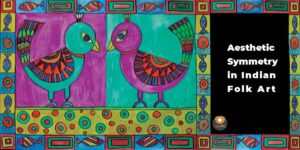To understand this school in its proper perspective, the traditions in which it has its roots should be considered. The source of Mughal painting was Persian. The art of Persia was greatly influenced by Mongolian art. Mughal paintings is distinctive but Indian. It has the flavour of Persia but the inborn charm of Indian tradition.
Miniature paintings made as either book illustration or as a single works. These paintings evolved during rule of various Mughal Emperors in India. The paintings often revolved around themes like battles, legendary stories, Hunting scenes, wildlife. These painting plays important medium to narrate the tall tales of Mughal emperors. Popularity of this art made its way to various Indian courts as well. Victoria & Albert Museum in London has largest and impressive collection of these paintings.
Miniature Painting Origin
When Humayun, returned from his exile he bought two Persian artists – Mir sayyid Ali & Abd as-Samad. Humayun instructed artist to create many paintings which also includes ‘Khamsa of Nizami’. These paintings had influence of traditional style Persian art. This new style of art form called as ‘Mughal Painting’ was born. Mughal Painting was further developed by subsequent Mughal emperors. Idea of self portait was intreseting for many rulers. Mugal Art gained popularity among Royals. It was a great artistic medium to display there bravery and achivements. After death of Humayun, his son Akbar made Mughal painting further more famous.

Under the reign of Akbar Mughal paintings evolved and developed at a rapid pace. As he ordered creation of many paintings kept close attention to final output. He was very particular about details and artistic elements. Tutinama’ which translates to ‘Tales of a Parrot.’ ‘Tutinama’ is an Persian story divided into 52 parts. Akbar commissioned 250 miniature paintings that narrated ‘Tutinama’ in an artistic manner. Abdus Samad and Mir Sayyid Ali Iranian artist completed this work, it took almost 5 years to complete. During this period artist’s illustrated Babar Nama, Akbar nama, Hamza nama & razm nama and other beautifully illustrated manuscripts. ‘Gulistan’, which was Saadi Shirazi’s masterpiece, created at Fatehpur Sikri. 1570 to 1585, Akbar hired 100’s of artists who practiced Paintings in his court.

After the death of Akbar, Mughal Painting continued to grow under the reign of Jahangir. He ordered his artist’s to follow ‘Single Point Perspective’, influenced by Eurpoean paintings. This gave a whole new perspective to Mughal painting. Paintings commissioned by Jahangir had finer brush strokes and ligher colors in artwork. ‘Jahangir nama‘ commissioned by him.
Prominent Painters During the Mughal Period
Mughal art, which started as an art of illustration and excelled in portraiture in the succeeding period, which was the best, became at last a rather weak expression of life around in pictorial terms. Starting with strong Persian bias, it slowly assimilated a blend of the indigenous with an efflorescence in which the foreign flavour was finally eliminated almost completely. No description of Mughal painting would be complete with a reference of the delicate treatments of birds, animals and plants which rank among some of the greatest masterpieces of the period.
Initially, Persian painters, such as Mir Sayyid Ali and Abd al-Samad played a key role in the growth and development of Mughal paintings in India. Later on, during the 16th and 17th centuries, painters like Daswanth, Basawan, Miskin and Lal worked in the Mughal court and kept the art alive.
During Akbar’s reign, an artist named Kesu Das started implementing European techniques in Mughal paintings. A renowned painter named Govardhan worked under three major Mughal emperors – Akbar, Jahangir and Shah Jahan. Other prominent artists of the Mughal period were Kamal, Mushfiq and Fazl. Many other artists, including Bhawanidas and Dalchand, started working at Rajput courts when the Mughal Empire began to decline.
Class Objective of Mughal art for 14yrs+
- Explanation of history and origin of Mughal Art. How Mughal art was influenced by Persia & Mongolian art.
- Mir sayyid Ali & Abd as-Samad two important names in miniature paintings
- Known paintings created during Humayun & Akbar period
- Introduction to Mughal architecture which is remarkably symmetrical and decorative amalgam of Persian, Turkish, and Indian architecture.





